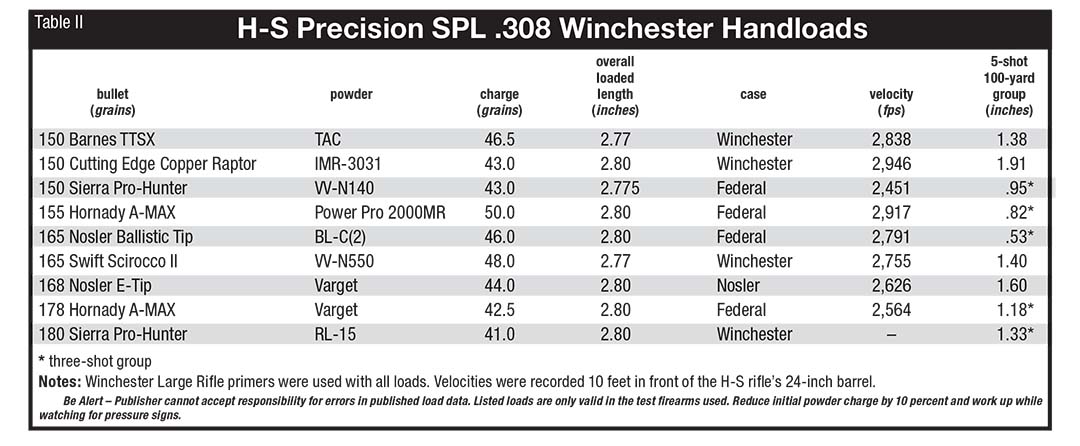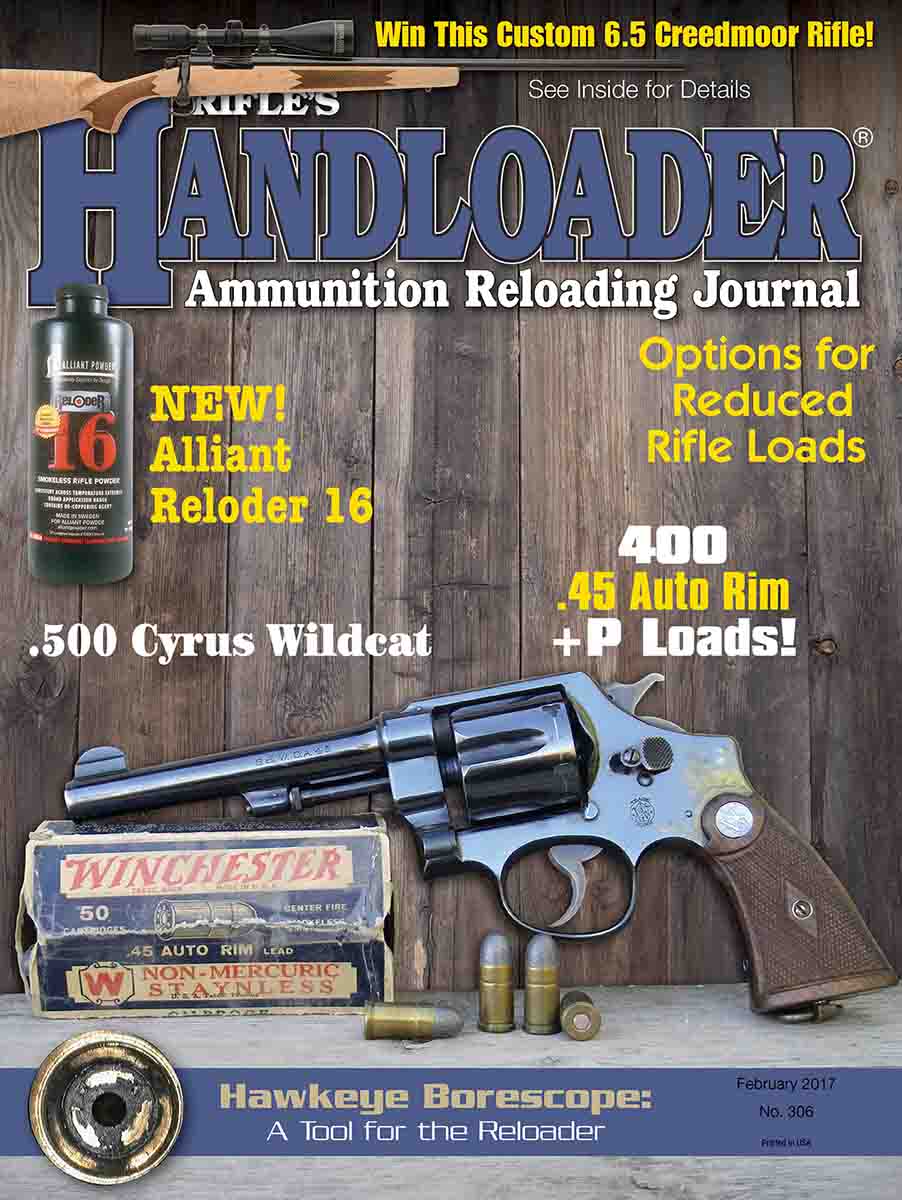H-S Precision Sporter Light Rifle
Wringing Out a Semi-Custom .308 Winchester
feature By: John Haviland | February, 17
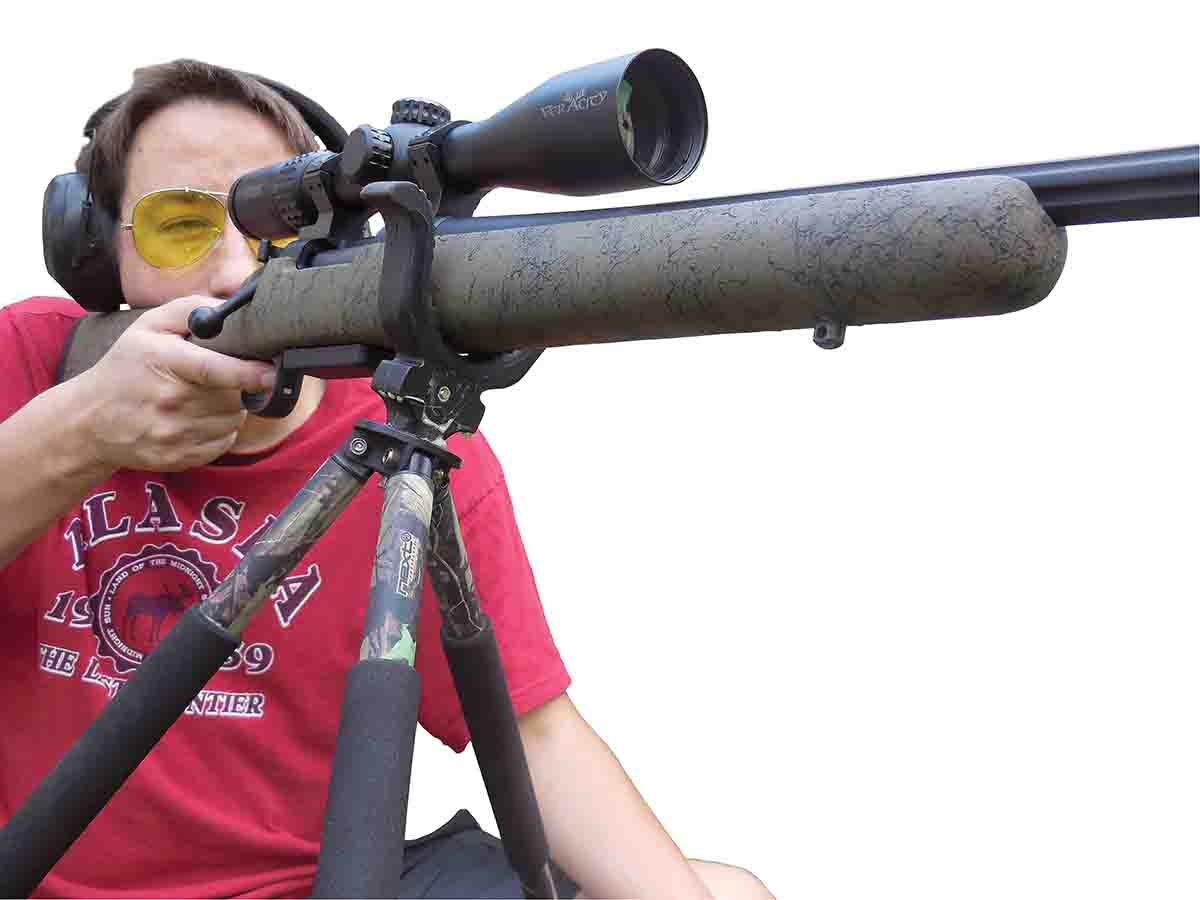
In 1998 Houghton decided H-S needed to become more independent and began producing its Pro-Series 2000 bolt action machined of 416R stainless steel. H-S (www.hsprecision.com) designs and manufactures every part that goes into its rifles based on the Pro-Series action. The line has grown to include 13 models of competition, hunting, tactical and takedown rifles.
These rifles are semi-custom, so customers can order a rifle tailored to their taste. The hunting SPL (Sporter Light) is H-S’s most popular rifle. In either a right- or left-hand 2000 action, it is chambered in cartridges from the .204 Ruger to the .338 Winchester Magnum. Kent Wince, H-S’s technical support man, said the 7mm Remington Magnum and .300 Winchester Magnum are continually favorite cartridges. “However, the 6.5 Creedmoor has become real popular over the last six months,” he said. Some less-popular cartridges chambered in the SPL include the .240 Weatherby Magnum, .25 Winchester Super Short Magnum, .264 Winchester and .30-378 Weatherby Magnum.
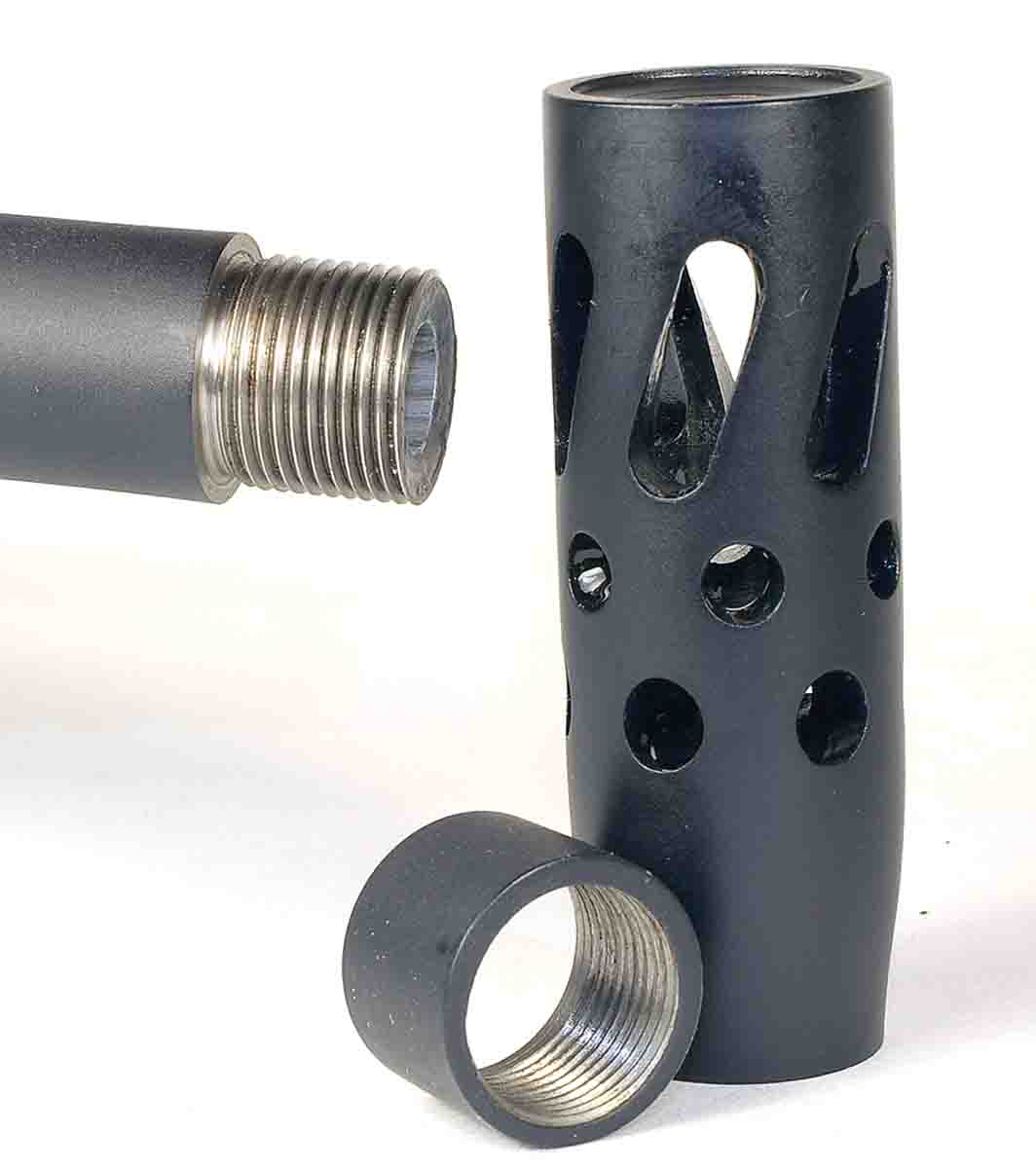
Stocks are available in 17 colors from black to spruce green to winter camo with a 12- to 14-inch length of pull. Barrels have a “magnum sporter” contour with a diameter of .650 inch at the muzzle. Lengths vary from 20 to 26 inches. A removable muzzle brake is optional. For this review I borrowed an SPL .308 Winchester with a 24-inch barrel and a muzzle brake. The metal of the SPL is coated with Teflon; a CERAKOTE finish is an option.
The Pro-Series 2000 action is sort of old-school as compared to more recent actions with multiple locking lugs and minimal cuts in the receiver cylinder. The Pro-Series’ ejection port encompasses nearly half of the right side of the receiver. That large opening does remove stiffness from the receiver, but it’s convenient, because the room easily allows single loading of the rifle by dropping a cartridge on top of the magazine follower, and sooner than later, you will need to fish a cartridge or fired case out of the rifle. The large ejection port also makes it easy to clean the interior of the receiver, especially the locking lug seats.
Like nearly every modern action, the Pro-Series’ bolt face is recessed. The bolt face has a solid rim with no cut in a locking lug face to house a sliding blade extractor or slot in the rim to accept a “Sako-style” extractor. The Pro-Series’ extractor looks like the head of a crochet hook protruding from the bolt face near the right locking lug. The extractor is held forward with a strong spring, and the first 20 or so times I chambered a cartridge, the rifle required an extra push on the bolt handle for the extractor to slip over a case rim. After that, tension on the extractor relaxed, and cartridges fed without a hitch. Opposite the extractor
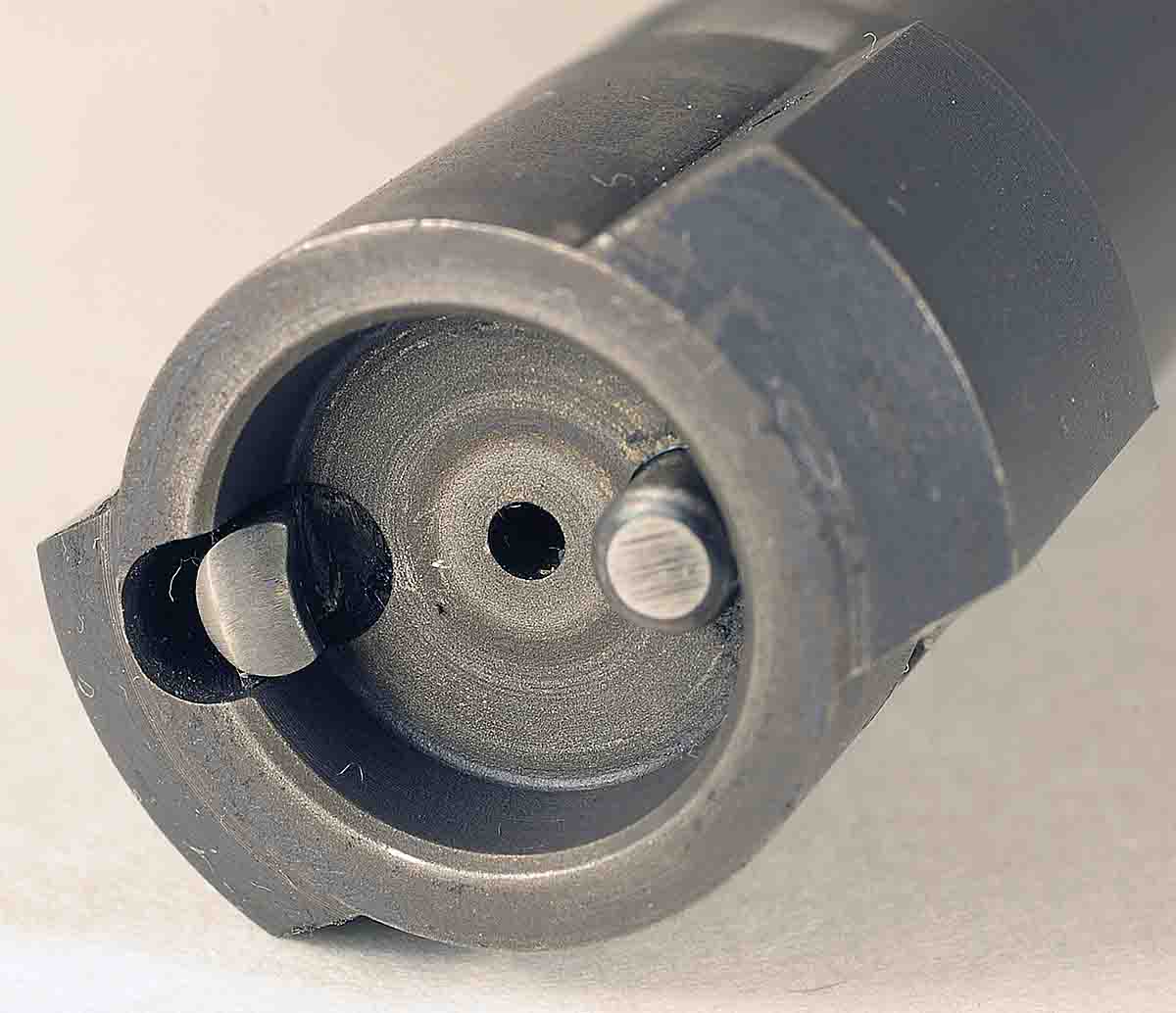
The receiver’s recoil lug is a plate clamped between the barrel and receiver. The lug fits into the front of the aluminum bedding block molded into the stock. A 1.45-inch thick square of aluminum sits between the rear of the recoil lug and front of the magazine opening to soak up recoil. A crosspiece, directly behind the magazine opening, adds diagonal stiffness. The tang rests on the rear of the bedding block. Receiver screws extend through the frame at the tang and middle of the recoil lug to pull the round bottom receiver tightly into the bedding block.
The manufacture of the SPL’s stock starts with a bedding block fixed in a mould. The sides of the mould are layered with Kevlar, fiberglass and carbon fiber. The mould is next injected with polyurethane foam to fill the core of the stock. The stock is hand-finished to final shape. Stocks are completed with paint similar to auto body paint in one of the 17 colors. The SPL’s stock weighed 43 ounces with a hard-rubber recoil pad. The stock was as stiff as a pry bar.
A detachable steel magazine holds cartridges in a staggered stack. The top cartridge is positioned directly in line with the chamber. The rifle’s magazine holds four .308 Winchester cartridges and protrudes about a half-inch below the bottom of the stock. Magazines that hold 3, 5, 7 and 10 rounds are also available. The inside of the magazine is just long enough to hold .308 cartridges loaded to their established maximum length of 2.810 inches.
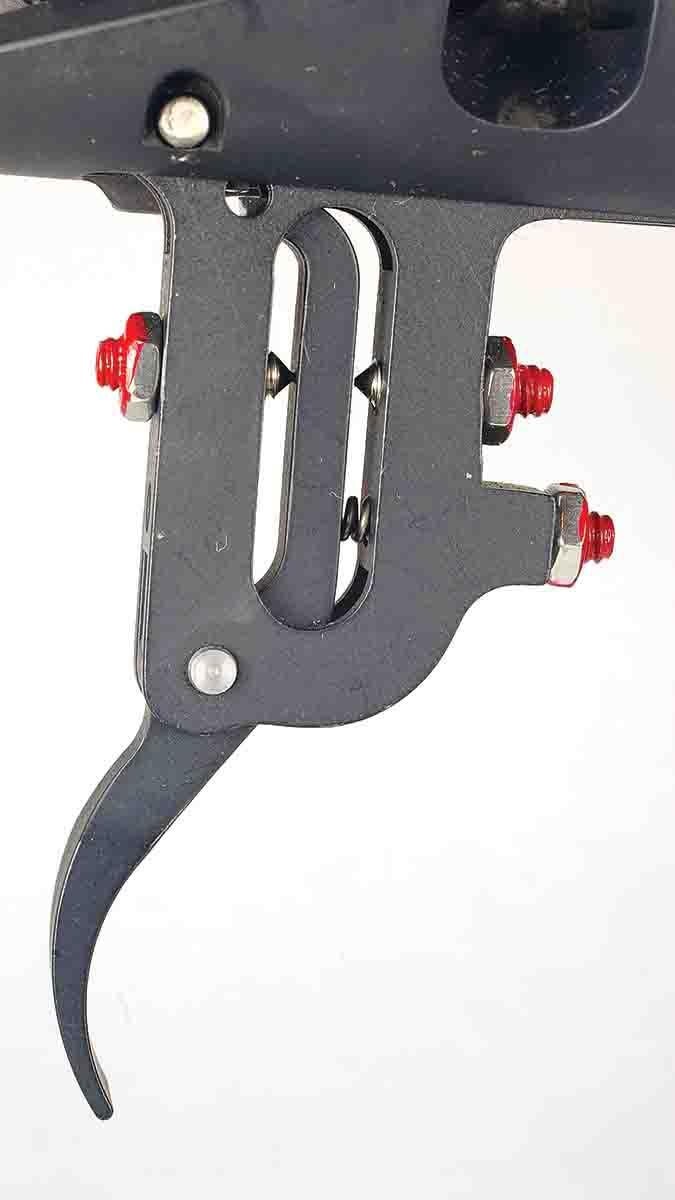
A look inside the rifle’s bore with a Lyman Borecam borescope showed only a few tool marks across the 10X cut-rifling lands. The remainder of the bore was very smooth with a fine “grain” running with the bore. The lands seemed to have a slight bevel where they met the grooves. This helps reduce strain on a bullet and fouling.
I shot nearly 100 cast bullets through the rifle over two days. A peep into the barrel with the bore-
scope showed it blackened from powder fouling and bullet lubricant. Solvent and patches cleaned out that mess, and a second look showed not a single smear of lead on the rifling. After firing 40-some jacketed bullets through the rifle, streaks of copper fouling were here and there on the rifling – some on top of the lands and some against the edge of the grooves. The fouling dissolved after soaking the bore for a few hours with Gunslick Foaming Bore Cleaner.
Six flutes on the barrel run a few inches in front of the receiver to just short of the threaded muzzle. The flutes probably reduce weight some and provide a larger surface area to dissipate heat faster, but mainly they are stylish and look cool.
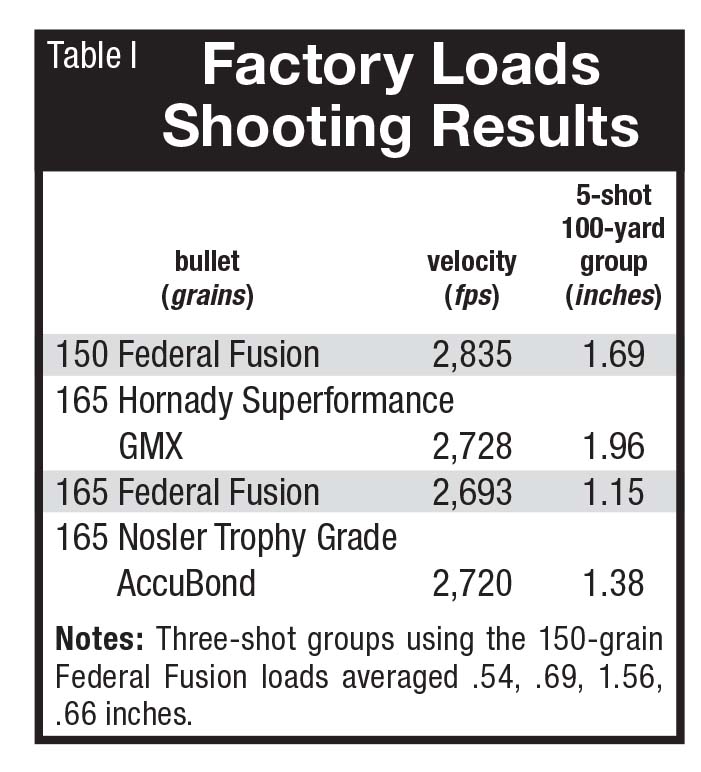
The trigger on the SPL rifle is inventively uncomplicated. It contains only a trigger inside a frame and adjustment screws for creep, overtravel and pull weight from 2.5 to 5 pounds. Its open frame will not collect moisture and freeze up in cold weather. The three-position safety on the bolt shroud, in its rear and middle positions, disengages the trigger from the sear. The SPL’s trigger was set at 3.0 pounds. There was no creep or overtravel, and I left well enough alone.
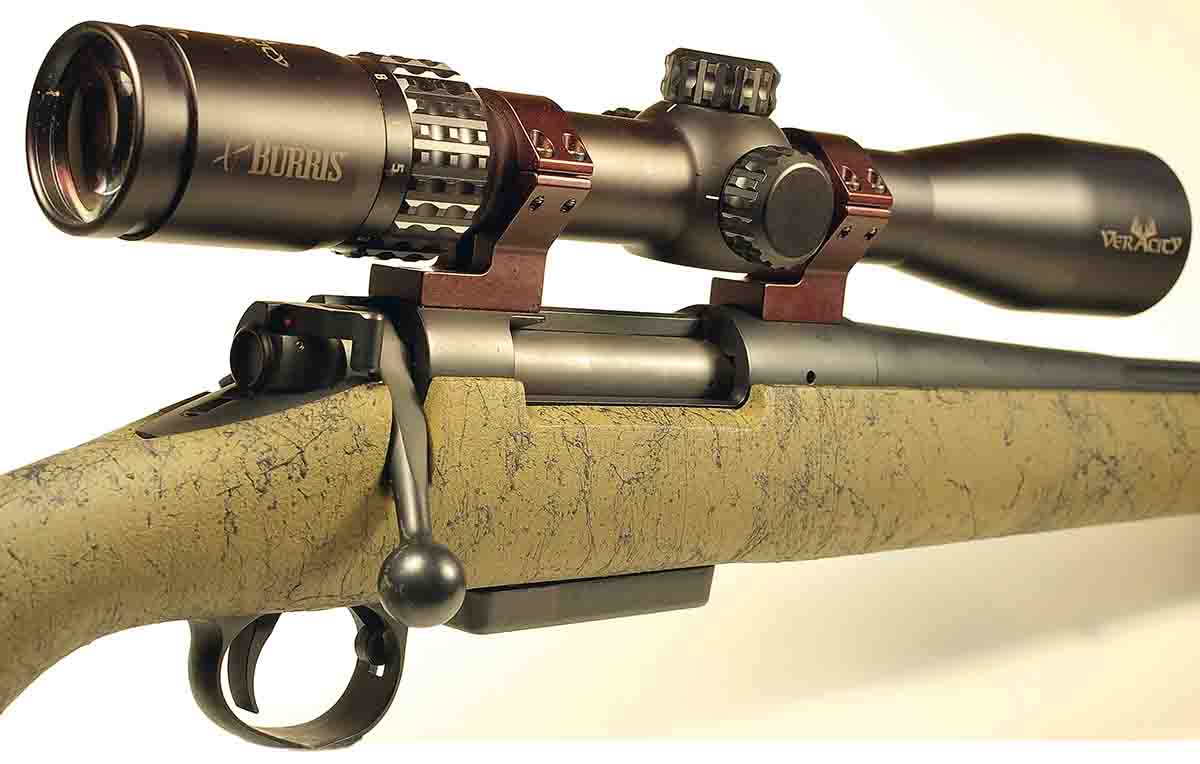
A Burris Veracity 2-10x 42mm scope was attached in Talley Lightweight Alloy Scope Mounts on the SPL rifle. The whole outfit weighed 9 pounds, 1 ounce.
I started shooting 165-grain cast bullets loaded with 27.0 grains of LT-32 powder from the .308. The load’s recoil was mild to begin with, because the bullets had a muzzle velocity only slightly over 1,800 fps. Add the rifle’s weight and muzzle brake, and the scope’s crosshairs barely jumped off targets at 100 yards.
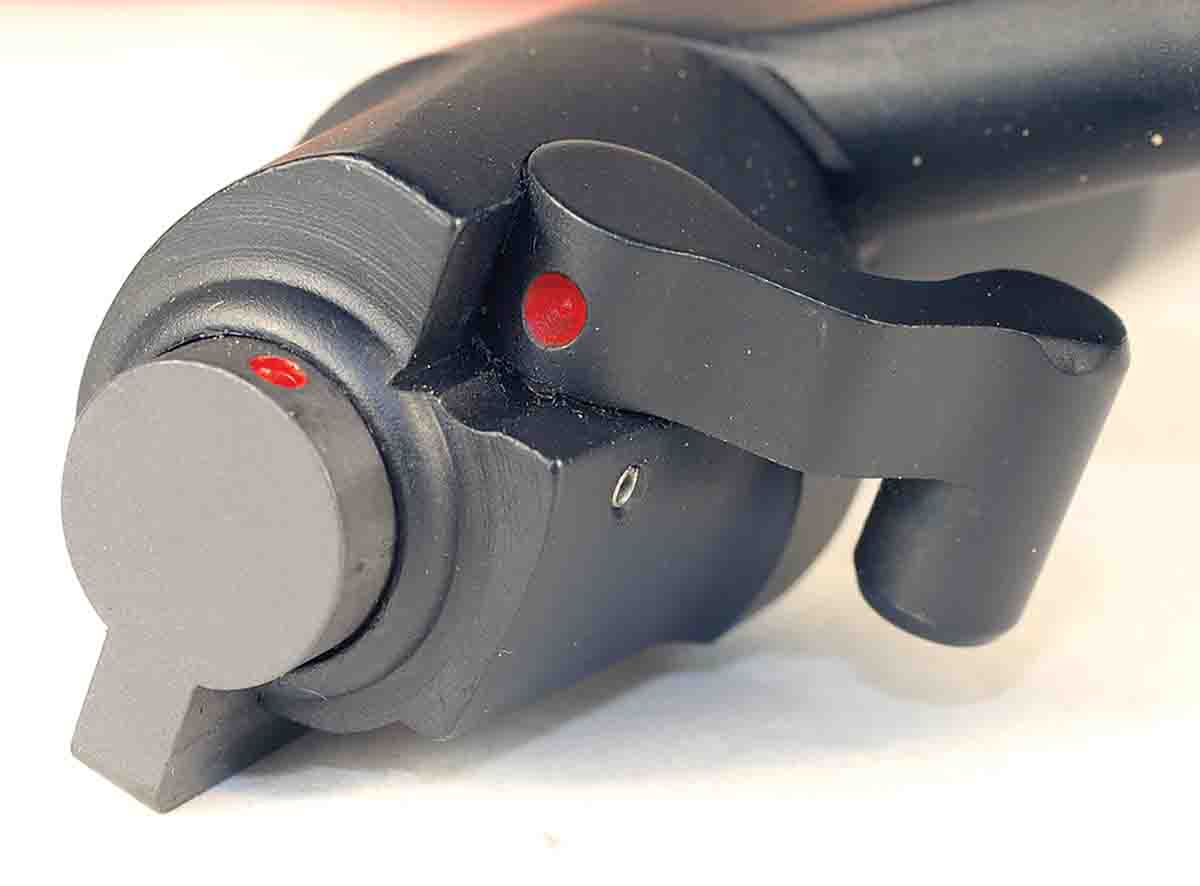
The rifle was steady when supported on a tripod with my back braced against a post while sit-ting. The right side flute on the nose of the comb positioned the base of my thumb just right, so my hand held the thin section of the grip, and the pad of my index finger lay just right on the trigger. The rifle and I shot four-shot groups measuring 3 inches and a bit at 100 yards. Groups were a little larger shooting from prone with the rifle braced only in my hands. The cast bullet loads shot groups of 2.5 to 3 inches from the support of a bench.
The real test was to see if it would meet H-S’s guarantee: Its rifles chambered for .30- and smaller-caliber cartridges will shoot three bullets into .5 minute of angle at 100 yards. Three-shot groups with handloaded Sierra 150-grain Pro-Hunters, Hornady 155-grain A-MAXes and Nosler 165-grain Ballistic Tips came close to that pledge. So did nearly every other handload and factory load listed in the accompanying table, if you cherry-picked three bullet holes from the five-shot groups.
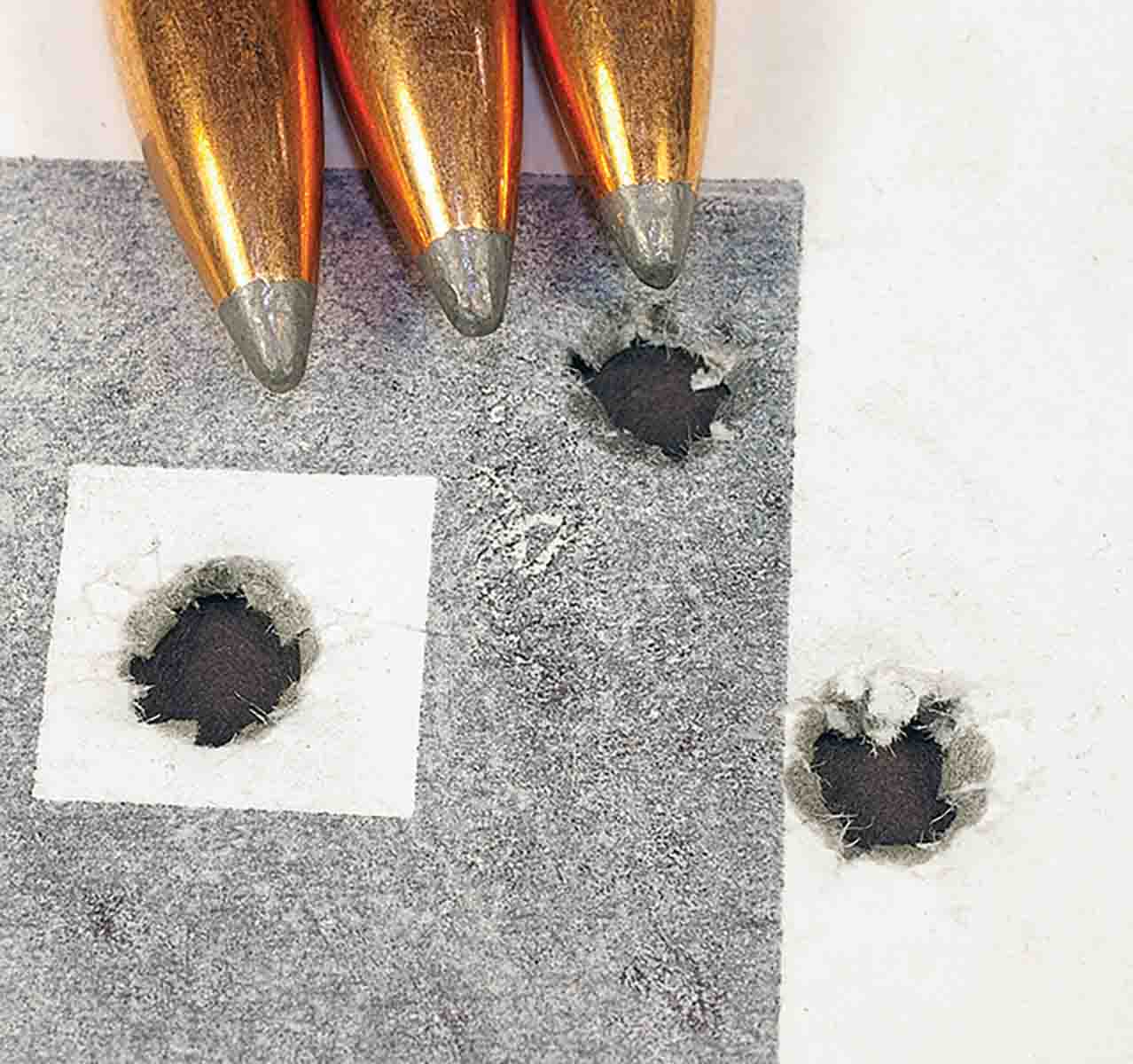
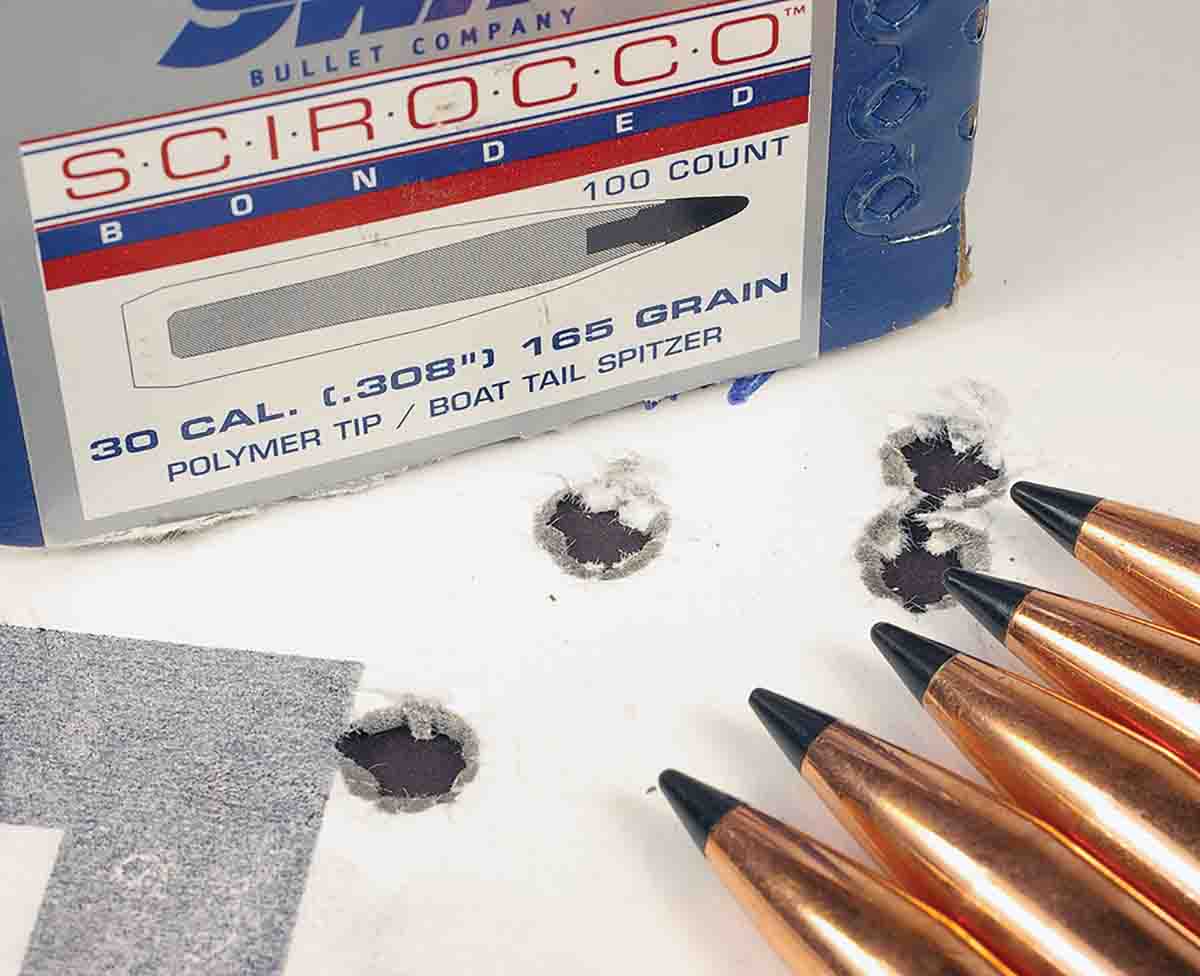
That’s why offering an accuracy guarantee could paint a company into a corner, but Wince said H-S takes customers at their word. “We’ll get the rifle back and go over it end to end,” he said. “If it doesn’t shoot quite right, it’s often just dirty.” Once in a while the receiver or scope mount screws may be the problem. Or the optics might have gone haywire. “If there is a problem with the rifle,” he said, “we’ll fix it or send them a new rifle.” Everything is right on the H-S Precision SPL I’ve been shooting.
